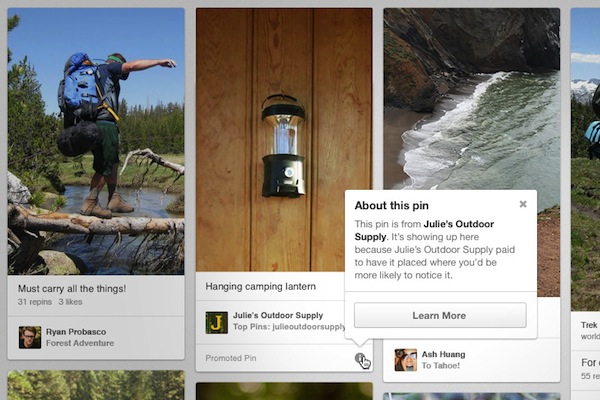For most consumers, two of their most popular social media destinations, Pinterest and Instagram, have announced the addition of paid advertisements to user’s feeds. Users are used to ads in news feeds on platforms like Facebook, Twitter, and LinkedIn, but paid ads entering Pinterest and Instagram may cause some (or a lot) annoyance to consumers.
On the flip side, marketers have been waiting for a chance to interact with consumers through ads on these platforms since they have taken off at rocket speed, gaining more than 220 million fans combined at light speed.
Marketers crave new ways of reaching these incredibly engaged people who spend up to 8 minutes a day on Instagram and 15 minutes a day on Pinterest, sorting through photos, uploading selfies, and building holiday and food inspiration boards.
Over the past few months, Pinterest has added several enhancements to the platform with personalized pin recommendations, rich pins, and better analytics options for developers.

Some users are already seeing the latest addition of Promoted Pins. The idea behind Promoted Pins is simple – allow brands to add their own pins into search results and category feeds in a way that feels less intrusive than a traditional pop-up ad.
The Promoted Pins come up in a search result so it feels more natural to the consumer because it is a matching pin with their search interest. For instance, a search for [make-up tutorial] may bring up a beauty brand promoting its latest eye shadow shade or pumpkin recipe shows a cooking brand recommending a specific baking product.
Meanwhile, popular photo-sharing site Instagram received a lot of flack when initially purchased by Facebook because users speculated that ads would be coming following the acquisition. After introducing new photo filters and a 15 second video feature, Instagram announced it was introducing ads slowly and allowing users the ability to hide any non-relevant ads from their photo stream and provide feedback. Doesn’t sound all bad, right?
Just last week, Michael Kors became the first brand to roll out the first Instagram ad with a luxury watch surrounded by a table of macaroons. This one post generated 33,000 new followers and garnered more than 218,000 likes within just 18 hours.

On November 4, General Electric debuted its first ad with the GE90 jet engine to a similar mix of good and bad reviews, which isn’t that surprising based on the 20 percent of negative comments Michael Kors received from its first post. In two days, the ad generated more than 59,000 likes and 1,800 comments.

As advertisers, we have endless opportunities to reach consumers with these new platform offerings. How do we ease these new tactics into marketing plans and budgets? What’s the most appropriate way to reach consumers for the first time on highly trafficked platforms?
1. Imagery Matters
Both Instagram and Pinterest are built on images, what the user is trying to convey with the skyline or even the 1,000th selfie the beauty blogger is uploading – it’s all about the image.
If brands haven’t, brands should consider editing current photo guidelines to fit in with the “community” unwritten rules.
2. Understand the Medium
Brands want to be in the mix, but it’s about fitting in and enhancing the consumer experience with your pin or photo that has a natural tie-in versus screaming the message from a megaphone with heavily branded content.
3. Connect Pins and Photos to Other Marketing Efforts
Brands like Piperlime and Nordstrom have alerted their other social communities like Facebook with a post about the “most popular pin” and driven consumers to specific destinations to purchase products.
Brands should consider other ways of promoting popular products through customized emails and keyword searches to capitalize on popularity across channels.
4. Test and Learn
The beauty is marketers can develop a few options and test which format is resonating best with its audience.
For example, Michael Kors led with a watch in its first Instagram ad and may switch things up next time to focus less on potential arm candy and on a handbag instead.
Get creative with photos and copy, but also identify peak times throughout each season to be more or less active around, depending on the brand’s target audience.


